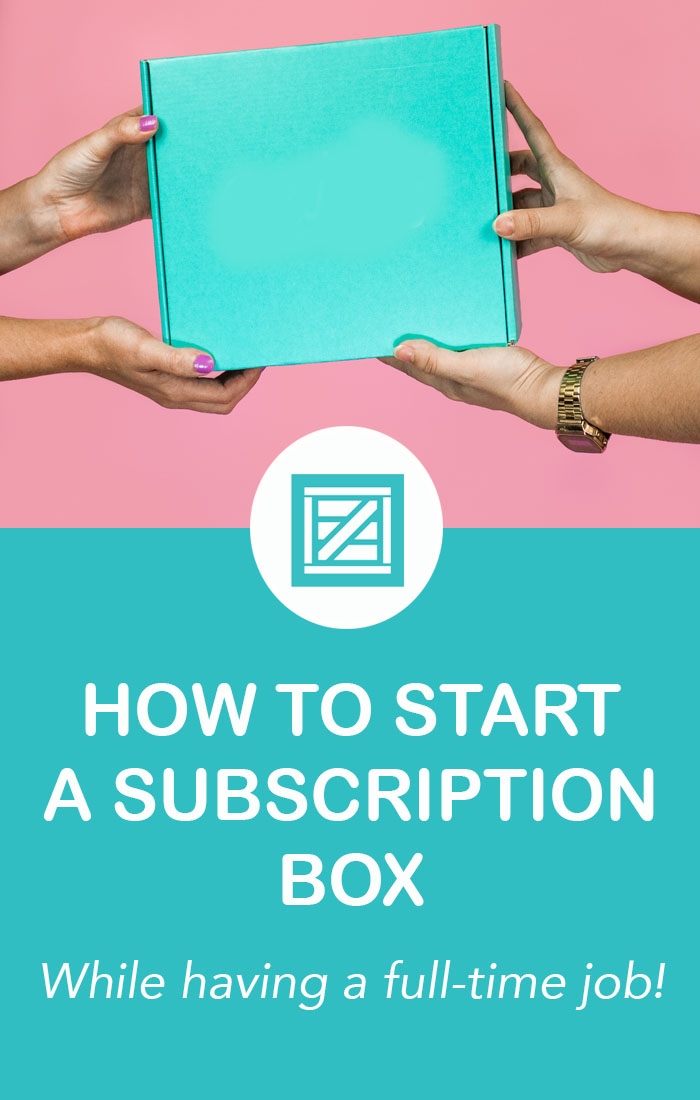So… you’ve got this idea for a subscription box. And the more you think about it, the harder it is to stop. You’ve Googled “how to start a subscription box”, looked up vendors, and feel almost ready to pull the trigger.
The only problem is… you’ve got a full-time job. Ugh. Well, many of Cratejoy’s subscription box entrepreneurs started their business in the same situation, so it can be done.
Below, we’ll show you some practical advice on how to get your subscription box off the ground while working a 9-5. Specifically, we’ll discuss…
- Where to start
- How to build a business plan
- How to keep organized
- How to find a community
- When to go for it
Getting Started
The first thing you’ll want to do is validate your subscription box idea. Getting feedback early in the process will save you time and money. After all, you don’t want to pour hours and hours into an idea that isn’t going to sell.
One of the easiest ways to validate your subscription box idea is to start sharing your idea with people. You can start with friends and family, but it would be even more helpful to get feedback from people in your target market. For example, if you plan to start a subscription box for people who love to knit, you’ll need to find knitters online or in real life and ask them questions about their hobby. Ask them what they’d want to see in a knitting subscription box and if there are any “pain points” that your box can solve for them.
Alternatively, you can set up a preliminary landing page for your business idea. Think of this as a conceptual prelaunch; if you keep your landing page pretty basic, it’s not too much effort to expend. Set up an opt-in for email capture, and if enough people sign up, you’ll know there’s an interest in that niche.
Read more: See how to set up a landing page with Cratejoy’s Prelaunch Theme.
Building a Business Plan
Once you’ve validated your idea, it’s time to create a business plan. Cratejoy has a few helpful tools, like our startup costs calculator and box pricing guide, to give you a better understanding of the cash flow and resources to get started. Before you can draft your business plan, you need a firm understanding of your startup and operating expenses.
In this business plan, you should focus on 4 areas:
- your name,
- niche,
- target customer, and
- short-term & long-term goals.
Your business goals should include actual dates and numbers – like your desired launch date, number of subscribers, and monthly revenue objectives. Once you’ve established these goals, you can figure out actionable steps towards achieving them.
For example, let’s pretend your goal is to launch a subscription box in 60 days. It’s a good idea to draw up a calendar for this period. You might spend the first 3 weeks promoting your launch page and searching for products, while you reserve Week 4 for reflection and readjustment of your goals. Weeks 5-7 could focus on product sourcing, packaging design, and website development, and Week 8 on wrapping everything up.
Once you decide on weekly tasks, create an action plan during the free hours that you have available. It’s important when conducting a side hustle, like starting a subscription box, to be very intentional with your time! Sticking to timelines and to-do lists will help keep you on track towards your goal.

Stay Organized
You have big goals and you want to crush them. We get that. But you also only have 24 hours in the day, so you’ll need to use them wisely.
If you work a typical 40-hour job, then you will have to dedicate nights and weekends to build your subscription business. The more organized you are, the more efficient you’ll be with your time. In the beginning stages of a subscription box, you will be spending a lot of time sourcing products, contacting vendors, and setting up your branding and marketing collateral. We recommend using a tool like Evernote or Trello to organize your research, vendors and track progress.
Tip: Read how Evernote & Trello can help streamline your procurement process.
In terms of branding and marketing, you have two options. Either you can DIY or you can outsource these to a professional. Whether you should hire out these jobs or attempt to do it yourself is up to your comfort level with the task at hand, the amount of time you have and your cash flow.
If you are operating on a strict budget, it may be better to DIY some of the early logo and branding using a program like Canva, Looka, or Design Wizard. However, if you can afford it, we recommend hiring out the tasks that you don’t have the skill set for. You can also use sites like Fiverr, Upwork or Crowdspring to have a logo or landing page created and social media accounts managed.
Tip: Take a look at Cratejoy’s recommended designers and developers to help you get started.
Find Like-Minded People
We’re all influenced, to some degree, by the people we hang out with… and their feedback. So if you want to be successful, you need to surround yourself with like-minded and entrepreneurial friends. You’ll be able to bounce ideas off them and receive constructive criticism so your business can grow.
We recommend joining some entrepreneurial online communities (check out the link to our Facebook group above!). These communities not only serve as great resources for getting answers to your questions, but can also provide you with peers who understand your struggles and can share their experiences.

How to Know When It’s Time to Take a Leap
At some point in your subscription box journey, you will have to decide whether to stay at your day job or pursue your subscription box full-time. Let me tell you, this won’t be an easy decision to make. We wish there was a magic formula that says “Once you hit X subscribers, you can quit your job.”
Unfortunately, there isn’t a number that works for everyone. Your number will depend on several factors – like your profit margin, expenses, and lifestyle.
It can be helpful, as a way to set some early goals, to determine what your number is. Look at your personal finances and establish the amount that you would need to make to quit your job. For example, if your personal bills account for $5000 a month, you know that you need to at least profit $5000 each month to get by. If your average profit on a box is $20, you can figure that you will need to get at least 250 subscribers before you can even think about leaving your full-time job. Once you get to 250 subscribers, you’ll be able to cover monthly bills and you can start to transition to a full-time subscription box entrepreneur.
Full disclosure: While launching your subscription box, you will work harder than you ever have. You will sacrifice nights, weekends and holidays.
Once you have your systems in place, your business will run much smoother and you can get some of your free time back. Until then, however, it’s nose to the grind.




